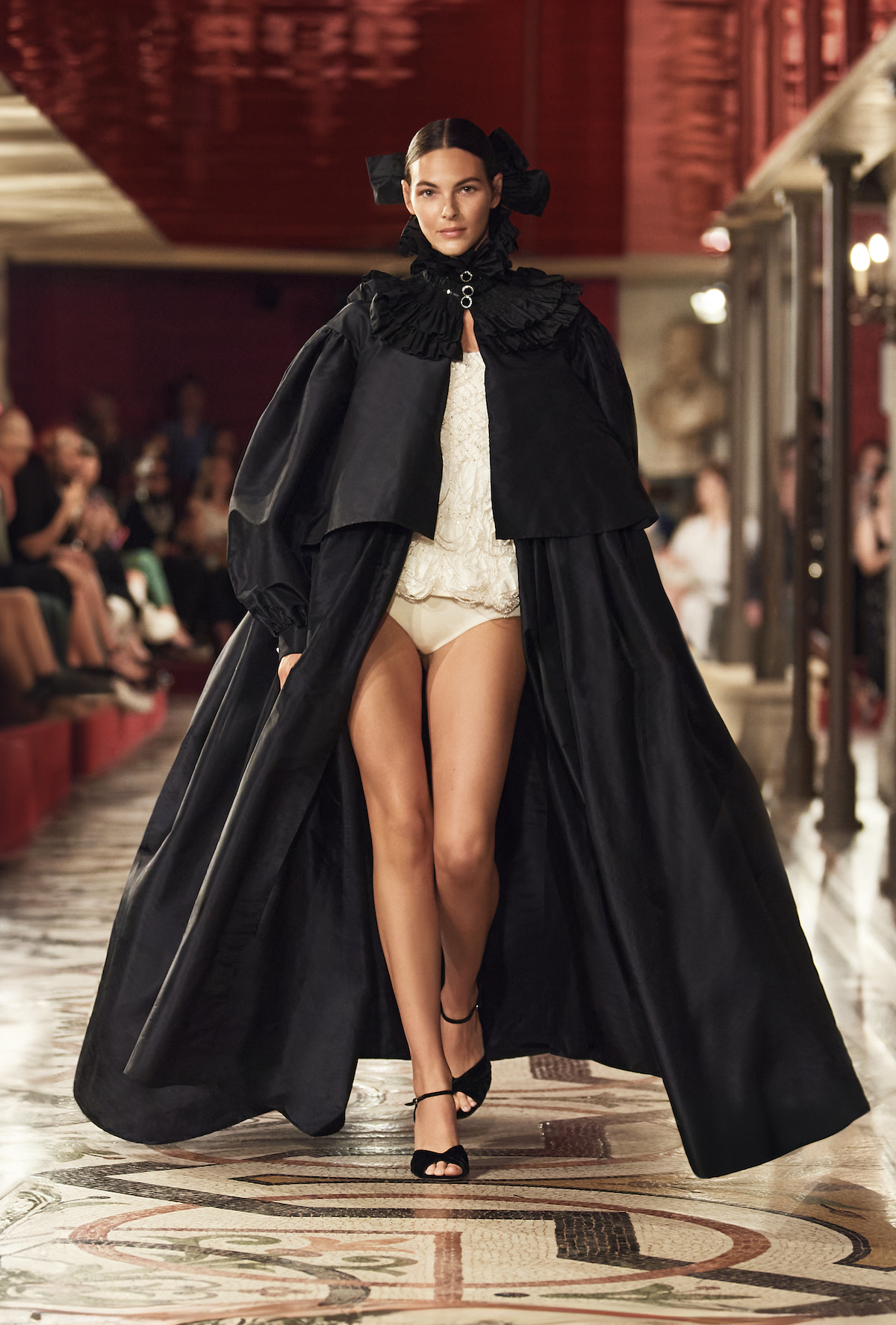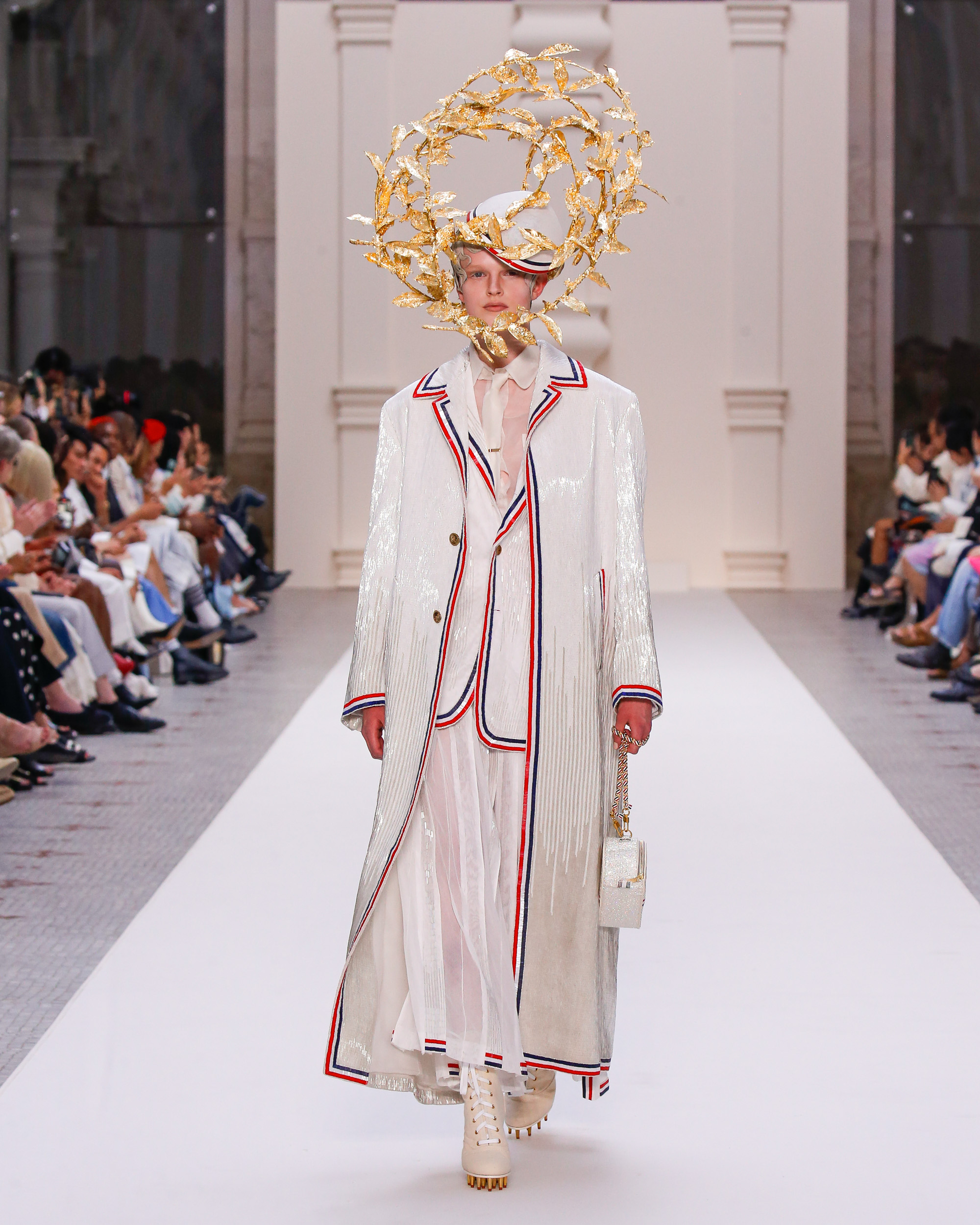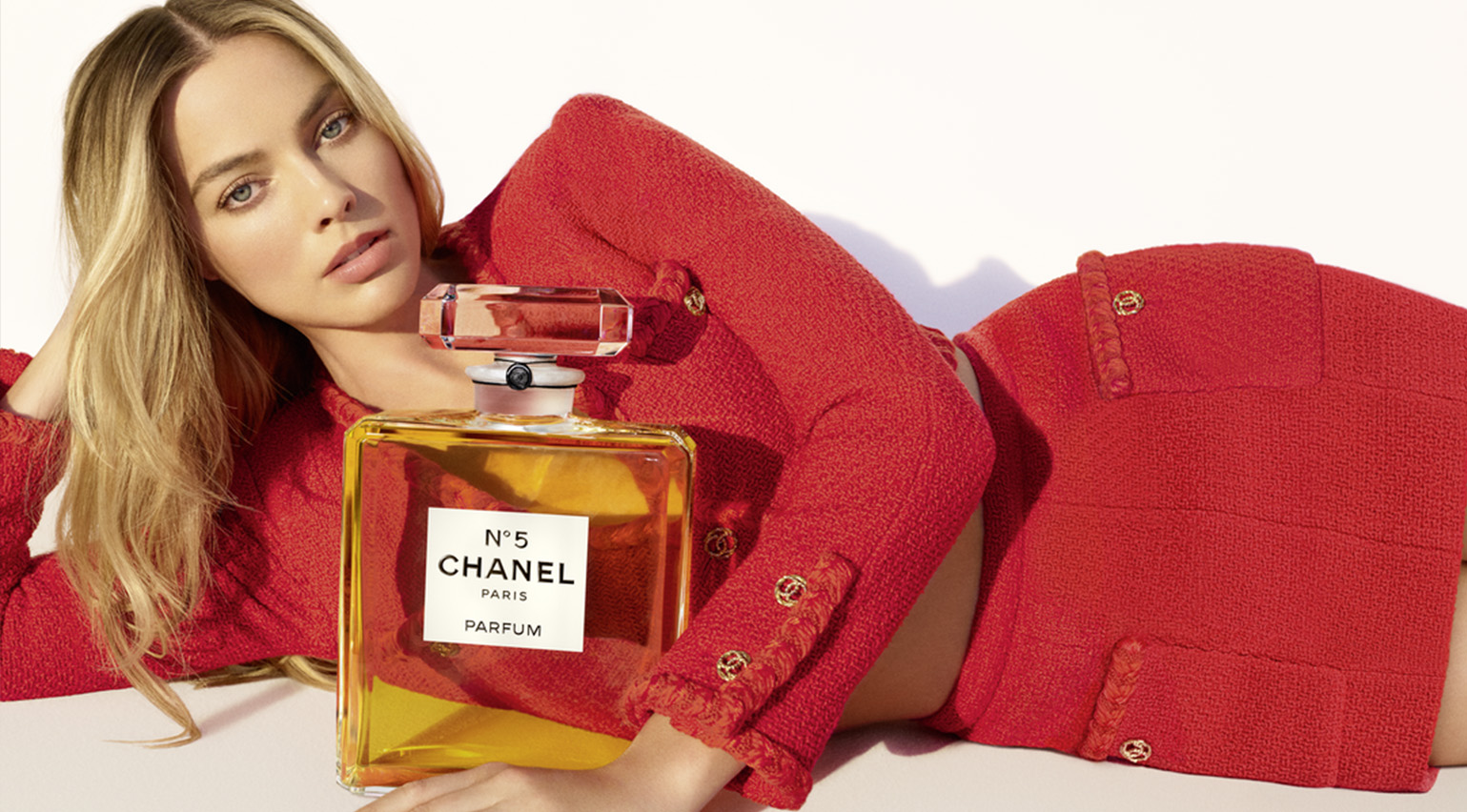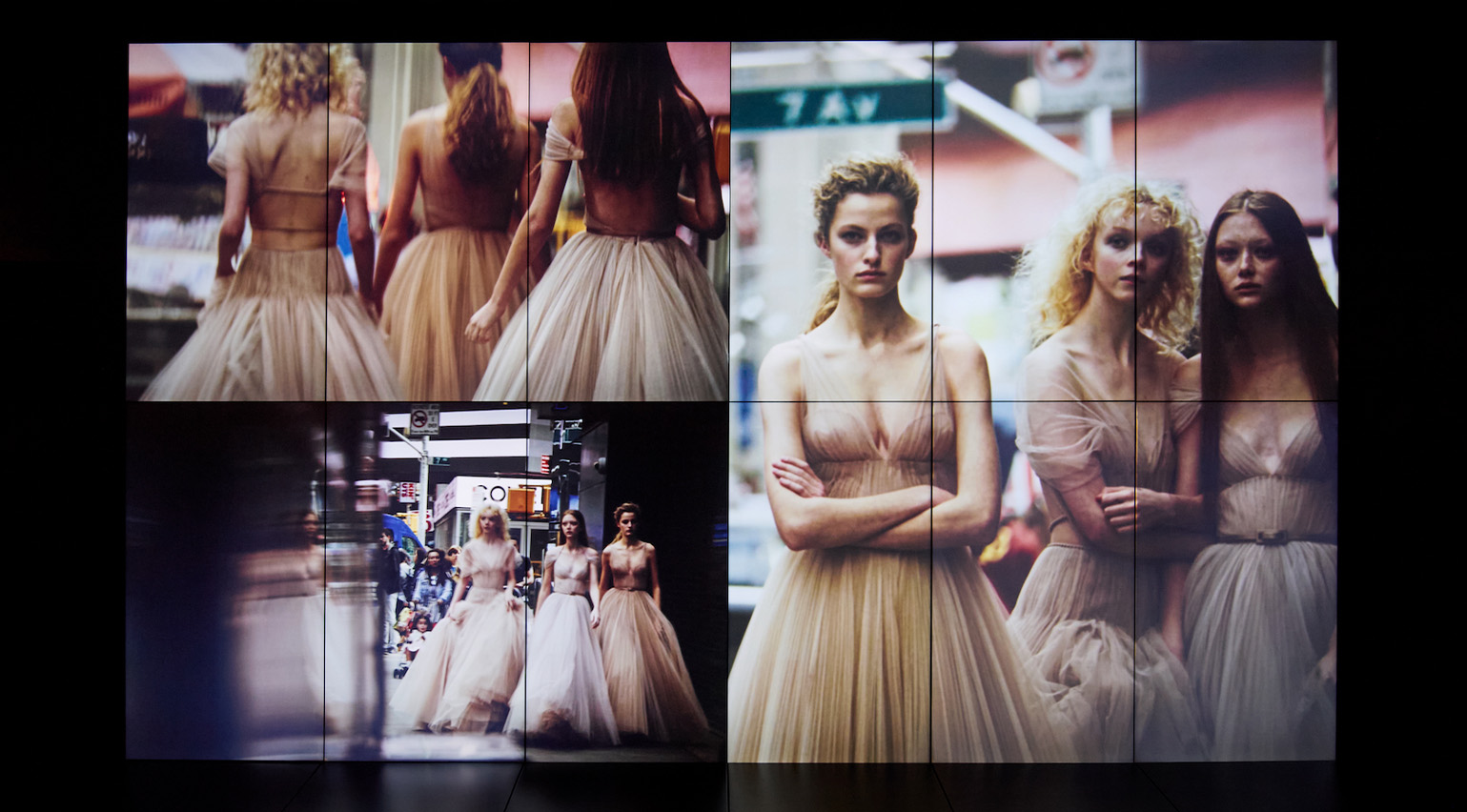Highlights from Haute Couture Week A/W 2024
Wallpaper* picks the best of Haute Couture Week A/W 2024 in Paris, from Olympics-inspired offerings at Dior and Thom Browne to the first Chanel collection since the departure of Virginie Viard

The imminent arrival of the Paris Olympics is the talk of Haute Couture Week – and, if the first day was anything to go by, the inspiration point of this season’s collections. At Dior, Maria Grazia Chiuri recalled the classical silhouettes of the event’s Ancient Greek roots, while Thom Browne riffed on American sportswear and ended his runway show with a medal ceremony of his own (here, though, the Chaumet-designed medals of the real games were replaced with models in gold, silver and bronze embroidered blazers). Meanwhile four-time gold medal winner Serena Williams took her seat front row, joining the usual phalanx of high-profile guests who travel to Paris for the haute couture shows, which represent the pinnacle of French craft (a legally protected term, couture refers to made-to-order gowns constructed entirely by hand for private clients).
Elsewhere at the week, there was the first Chanel show since the departure of creative director Virginie Viard yesterday (a replacement is yet to be announced), while a guest collection by Courrèges’ Nicolas di Felice at Jean Paul Gaultier was shown on Wednesday (previous guest designers have included Simone Rocha, Haider Ackermann and Olivier Rousteing). Shows from Armani Privé, Balenciaga and Viktor & Rolf rounded out the week.
Here, in an ongoing round up, Wallpaper* picks the best of Haute Couture Week A/W 2024.
.
The best of Haute Couture Week A/W 2024
Balenciaga

Balenciaga’s latest couture collection was shown in the house’s historic salons on Avenue George V, which were recently renovated by current creative director Demna to feel as if you were opening the doors and stepping back in time (‘for me, it’s very important for it to feel like a special place… it is the same place where Cristóbal used to be... he would look out of the window and see the same trees,’ he told Wallpaper* last year). This season, Demna looked towards the ‘streetwear, goth, skater and metalhead subcultures’ which have long been his inspiration at Balenciaga, melding them here with the tropes and grandeur of mid-century haute couture. ‘This couture collection is a tribute to subculture dress codes as important influences to my fashion vocabulary,’ said the Georgian designer.
As such, hallmarks of Cristóbal Balenciaga’s oeuvre were reinterpreted in Demna’s idiosyncratic style, seeing abundant, cocooning silhouettes constructed from denim, leather and nylon (for the final look, over 47 metres of nylon were used to create the dramatic final look, which was designed to disintegrate as it was worn). Other pieces elevated the quotidian, like a sharply cut T-shirt crafted from black scuba satin which Demna likened to Andy Warhol’s Campbell Soup series. ‘Demna is interested in not only object intrigue itself, but also, the techniques used to elevate said object into an art form,’ read the collection notes. Meanwhile, dramatic millinery created alongside artists Ni Hao and Alastair Gibson recalled traditional couture headpieces, though here were constructed from T-shirts set in resin or carbon fibre. It was the butterfly, though – which appeared on masks worn by models – that became the collection’s symbol, one of transformation and fleeting beauty. ‘These creatures are beautiful and extraordinary – they are of a perfect design,’ said Demna.
Armani Privé

Armani Privé A/W 2024
A quest for serenity inspired Giorgio Armani’s latest Privé outing, seeing the veteran designer look towards the lustrous surface of pearls for inspiration (indeed, for the occasion, a pearl-like runway had been installed in the Palais de Tokyo showspace). Watched on by his devoted celebrity muses – among them Cate Blanchett, Eva Green and Naomie Harris – this was a collection led by an exploration of surface and texture, moving from molten lamé tailoring and extraordinary beaded gowns towards surfaces entirely covered in shimmering crystals. Silhouettes hung close to the body – a series of black gowns in velvet or sequins which nipped the waist will no doubt prove seductive to his famous fans – while playful flourishes included bouncing feathered headpieces. ‘Gentle and enchanting,’ described Mr Armani, who took a beaming finale bow flanked by two of the collection’s models.
Wallpaper* Newsletter
Receive our daily digest of inspiration, escapism and design stories from around the world direct to your inbox.
Chanel

Chanel Haute Couture A/W 2024
Chanel marked its first collection since the departure of former creative director Virginie Viard with a show at Palais Garnier, the city’s opera house. Gone were the enormous constructed set pieces of both Viard and her forebear Karl Lagerfeld, with the ornate atrium and sweeping marble staircase instead serving as the show’s backdrop. It lent the collection – which for now was designed by an in-house team Chanel called the ‘Fashion Creation Studio’ – a feeling of reality, as if the models were simply striding along the corridors after an evening at the opera. That said, the collection’s taffeta capes and frilled collars had the requisite drama necessary for an haute couture show such as this, while this season’s tweeds were largely embellished, whether with jewellery-like adornments or feathers which emerged from sleeves or hems. Elsewhere nods to opera and the ballet – including Le Train Bleu and Apollon Musagète for which Gabrielle ‘Coco’ Chanel designed the costumes in the 1920s – came in tutu-like ruffles and bows tied in each model’s hair. Even without a creative director, it was a show which proved the enduring strength of the house codes – as for who will put their spin on them next, and when, rumours continue to swirl.
Dior

Dior Haute Couture A/W 2024
It was inevitable that the Paris Olympics would influence the season’s collections: driving around the city, the games’ architecture is already taking over the city’s streets, with vast stands being erected at Place de Concorde and along the Seine’s bridges (along with some amount of grumbling from the city’s residents about traffic and the imminent QR codes which will prevent them from travelling outside of their own neighbourhoods for the duration of the games). Maria Grazia Chiuri was the first of haute couture week to reference the Olympics explicitly with a collection which looked back to the classical roots of the games in Ancient Greece with garments which draped, toga-like on the body, or referenced the ‘peplos’, a garment made from a singular piece of cloth and folded at the waist. Chiuri noted it was a silhouette that had inspired Christian Dior himself, though here she spoke of a desire for modernity and freedom, using jersey fabric – more typically associated with sportswear – to replace the typical haute couture fabrics the house founder would have used.
The reference, she said was the 1924 Olympics, also held in Paris, where women were still fighting to compete. New fabrics, like jersey – first used by fellow female couturier Coco Chanel in 1916 after more luxurious fabrics became hard to get hold of – signalled a mood of liberation in women’s clothing. It felt a fitting reference for Chiuri, a feminist designer who has long rallied against the idea that couture must constrain the body; here was a collection of effortless and airy elegance, which no doubt appealed to the house’s clients in Paris’ currently sweltering heat. ‘[This collection] represents an extraordinary opportunity to combine couture and sportswear with classicism, rebellion, collective energy and, above all, the political value of the female body,’ the designer said via the collection notes. ‘It allows [me] to assert the power... of haute couture actions... [imagining] the elegance of a woman at once delicate and strong. A woman who performs just as well as a man.’
Thom Browne

Thom Browne Haute Couture A/W 2024
Last year, as part of the 20th anniversary celebrations of Thom Browne’s eponymous brand, the American designer staged his first-ever haute couture outing in Paris. Yesterday (24 June 2024), his sophomore couture collection – presented at Paris’ Musée des Arts Décoratifs – showed a designer already astute in the medium, which allows him to flex his creative muscle with both imaginative runway shows and extraordinary feats of embellishment and craft. Beginning with a series of male models clad in white Thom Browne skirt suits playing a game of tug-of-war, like at Dior, the designer looked towards the upcoming Olympics for inspiration. Here, he imagined a collection of de- and reconstructed American sportswear – like the tailored sportscoat, the swim trunk, and the pleated tennis skirt – created largely from white muslin in a nod to toiles, the draft versions of garments usually constructed from the fabric (guests were also instructed to dress in the muslin coats which served as the collection’s invitations). Of course, these archetypal garments were riffed on in imaginative ways by the designer, playfully layered or cinched and corseted, or adorned with sweeping embroidery and embellishment. In typical couture style, it ended up with Anna Cleveland as the bride, her gown erupting into a vast bunch of white flowers along its back, each one painstakingly crafted from fabric. The final scene, though, was a medal ceremony of sorts: three models, in gold, silver and bronze embroidered jackets stood on the podium for the show’s final tableau. ‘Couture is the Olympics of fashion,’ said the designer.
Schiaparelli

Schiaparelli Haute Couture A/W 2024
Daniel Roseberry hosted his latest couture show in Hôtel Salomon de Rothschild, the stately former residence of Adèle von Rothschild known for its ornate, gilded salons which have hosted many a runway show, from Valentino to Maison Margiela. It was the more anonymous basement, though, which the American designer chose to set his latest collection, the darkened space lit only by a series of dim chandeliers. It set the scene for a collection titled ‘The Phoenix’, which saw Roseberry inspired by a coq-feathered stole house founder Elsa Schiaparelli wore to the opening of the Ambassadeurs restaurant in Paris in 1941. Inspired by the Russian prima ballerina Anna Pavlova, the stole had been hand-painted by the artist Jean Dunand; in this garment, Roseberry saw a vision of the Surrealist couturier as a rising phoenix, ‘a magical creature whose power lay in her ceaseless ability to reinvent – not only herself, but fashion, too’.
Inspired by this idea of rebirth, Roseberry presented a collection of free association which was less to do with tidy thematics than a desire for each look to stand alone and evoke emotion (after all, the couture client is likely to only end up with a single look from the collection; ‘People don’t buy Schiaparelli, they collect it,’ Roseberry noted someone telling him recently). It began with his own phoenix – the opening look saw a model in a velvet cape adorned with trompe l’oeil feathered embroidery in three-dimensional chrome – while later pieces largely explored silhouette, whether blown-up tailoring or sinuous sheer gowns narrowed at the waist with corsets. Meanwhile, enormous bows, millefeuilles of ruffles, and riffs on the opera coat made reference to the archetypes of midcentury haute couture (Roseberry said the 1950s, in particular, was a reference this season).
‘Each gown, each bustier, each shoe, every piece of folded velvet feather, or triple organza spike, seeks to catch the eye and hold it,’ he said. ‘This is what makes haute couture so special: it’s an expression of my vision for the maison today, one free from marketing and merchandising. But it’s also something else: a way for me to honor that relationship, one of the most intimate ones in the world – the one in which I give women the power to be reborn, again and again and again.’
Stay tuned for more from Haute Couture Week A/W 2024.
Jack Moss is the Fashion Features Editor at Wallpaper*, joining the team in 2022. Having previously been the digital features editor at AnOther and digital editor at 10 and 10 Men magazines, he has also contributed to titles including i-D, Dazed, 10 Magazine, Mr Porter’s The Journal and more, while also featuring in Dazed: 32 Years Confused: The Covers, published by Rizzoli. He is particularly interested in the moments when fashion intersects with other creative disciplines – notably art and design – as well as championing a new generation of international talent and reporting from international fashion weeks. Across his career, he has interviewed the fashion industry’s leading figures, including Rick Owens, Pieter Mulier, Jonathan Anderson, Grace Wales Bonner, Christian Lacroix, Kate Moss and Manolo Blahnik.
-
 Tune into the rhythm of Tokyo’s most ambitious record shop
Tune into the rhythm of Tokyo’s most ambitious record shopVinyl Delivery Service in east Tokyo’s Skwat Kameari Art Centre is spinning a new narrative for the traditional record store model
-
 From Cubism to Pop, artists’ jewellery goes on show in Palm Beach
From Cubism to Pop, artists’ jewellery goes on show in Palm Beach‘Artists’ Jewelry: From Cubism to Pop, the Diane Venet Collection’ at the Norton Museum of Art showcases key pieces from an impressive collection
-
 Wallpaper* checks in at Waldorf Astoria Osaka
Wallpaper* checks in at Waldorf Astoria Osaka‘It’s rare to work on a brand new hotel of this scale in Japan in today’s landscape,’ says designer Andre Fu about Osaka’s newest luxury hotel. Wallpaper* paid it an early visit
-
 Margot Robbie, Marina Abramović and a 15-step Korean scalp treatment: the most-read Wallpaper* beauty stories of 2024
Margot Robbie, Marina Abramović and a 15-step Korean scalp treatment: the most-read Wallpaper* beauty stories of 2024The news of Margot Robbie becoming the face of Chanel No.5 and an illustrated guide to a 15-step Korean scalp treatment are just two of the most-read Wallpaper* beauty stories from the year gone by
-
 Unboxing beauty products from 2024, as seen on the pages of Wallpaper*
Unboxing beauty products from 2024, as seen on the pages of Wallpaper*Wallpaper's 2024 beauty picks included Chanel lipstick, Bottega Veneta perfume and solid soap from the likes of Aesop, Celine, Diptyque, Hermès and Sisley
-
 These illuminating fashion interviews tell the story of style in 2024
These illuminating fashion interviews tell the story of style in 2024Selected by fashion features editor Jack Moss from the pages of Wallpaper*, these interviews tell the stories behind the designers who have shaped 2024 – from Kim Jones to Tory Burch, Willy Chavarria to Martine Rose
-
 Giant cats, Madonna wigs, pints of Guinness: seven objects that tell the story of fashion in 2024
Giant cats, Madonna wigs, pints of Guinness: seven objects that tell the story of fashion in 2024These objects tell an unconventional story of style in 2024, a year when the ephemera that populated designers’ universes was as intriguing as the collections themselves
-
 Loafer bags to sock shoes, 2024 was all about the mashed-up accessory
Loafer bags to sock shoes, 2024 was all about the mashed-up accessoryWallpaper* fashion features editor Jack Moss reflects on the rise of the surreal hybrid accessory in 2024, a trend which reflects the disorientating nature of contemporary living – where nothing is quite what it seems
-
 Inside Dior’s ‘Gold House’ in Bangkok, a spectacular celebration of Thai art and craft
Inside Dior’s ‘Gold House’ in Bangkok, a spectacular celebration of Thai art and craftDaven Wu takes a trip to Bangkok to discover ‘Gold House’, a gilded new concept store from Dior which is rooted in both Parisian savoir-faire and artisanal Thai craft, featuring a café, gardens and showstopping gilded facade
-
 ‘He immortalised the birth of the supermodel’: inside Dior’s career-spanning retrospective of photographer Peter Lindbergh
‘He immortalised the birth of the supermodel’: inside Dior’s career-spanning retrospective of photographer Peter LindberghOlivier Flaviano, head of Paris’ La Galerie Dior, talks us through a new Peter Lindbergh retrospective, which celebrates the seminal German photographer’s longtime relationship with the French house
-
 Fashion features editor Jack Moss’ style gift guide
Fashion features editor Jack Moss’ style gift guideWallpaper* fashion features editor Jack Moss compiles his fantasy festive wish list – from a surreal Bottega Veneta tree decoration to Hylton Nel’s Dior-approved ceramic cats